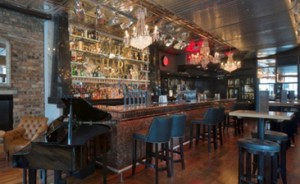How environmental factors can influence diners' eating habits

We all know how restaurant design can influence diners ’ eating habits.
Now research reported in New Scientist* has uncovered a wealth of information on how much factors such as lighting, windows and the size and shape of a wine glass can affect how much a customer eats and drinks.
From visiting 27 restaurants across the USA, mapping the layout of each one and tracking what each customer ordered, the following surprising facts emerged.
- Customers who sat by a window or in a well lit part of the restaurant ordered healthier food than those sitting in a dark table or booth.
- A table of four sitting within two tables of the bar drank an average of three more beers or alcoholic drinks with a mixer than those sitting just one table further away.
- The closer a table was to a tv screen, the more fried food a person bought.
- People sitting at high top bar tables ordered more salads and fewer desserts.
Alcohol influences on diners
It wasn’t just eating that was influenced by environmental factors.
The New Scientist brought 85 wine drinkers into their lab, gave them different sized glasses and told them to either sit or stand.
Their observation showed:
- People pour 12% less wine into taller glasses than into wider glasses that hold the same amount.
- Looking down at a glass makes it appear more full than looking at it from roughly the same level as the liquid. As a result, the wine drinkers poured 12% less into a glass that was sitting in a table compared to one they were holding.
- Because red wine is easier to see than white wine, the drinkers poured 9% less red wine into whatever glass they were holding.
It’s not just wine these observations apply to. A separate study of 86 bartenders in Philadelphia, who were asked to pour the amount of alcohol they would use to make a gin and tonic, a whisky on the rocks, a rum and coke and a vodka tonic. Whether they had worked as bartenders for 32 years or 32 minutes, they poured on average 32% more alcohol into short, wide tumblers than into high glasses of the same volume.
Conclusion
So what can be learned from this study? Should all restaurateurs dim the lights, put a bar on every wall and only serve alcohol in high glasses?
Of course not. Particularly when it comes to restaurant decor where a huge range of factors must be considered.
But it’s a fascinating insight into how even if a customer arrives at the restaurant with the best of intentions, a dark corner booth or an wide inviting glass may tempt them into thinking otherwise.
* Research by Brian Wansink of the Cornell University Food and Brand Lab at Cornell University, Ithaca, New York.
[contact-form][contact-field label=’Name’ type=’name’ required=’1’/][contact-field label=’Email’ type=’email’ required=’1’/][contact-field label=’Website’ type=’url’/][contact-field label=’Comment’ type=’textarea’ required=’1’/][/contact-form]



